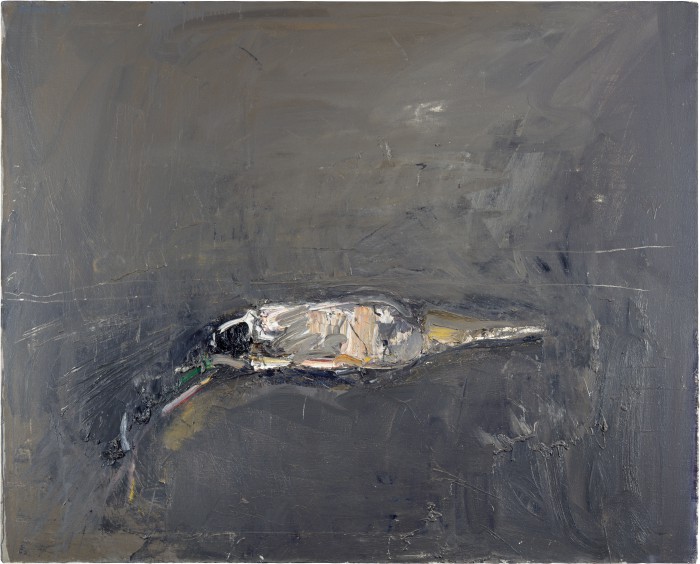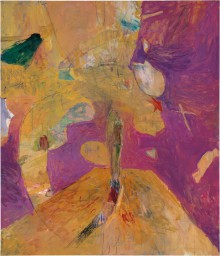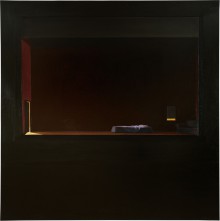Nathan Oliveira
Reclining Nude 1958

© Nathan Oliveira Estate courtesy John Berggruen Gallery. Reproduction of this image, including downloading, is prohibited.
Oliveira, who was born in Oakland, was never an abstract painter; rather, he came to his expressionistic style via portraiture while he was a student at the California College of Arts and Crafts (now California College of the Arts, or CCA). He recalled, “I worked with certain aspects of Abstract Expressionism, chance, risk, gesture, but I had a responsibility to those traditional aspects of painting that dealt with an image.” Oliveira was a great admirer of Willem de Kooning; he also looked to European models of figurative expressionism, including the work of Max Beckmann and Edvard Munch.
In Reclining Nude (1958), Oliveira brushed, pushed, and scraped thick paint to suggest the fleshy suppleness of a recumbent figure set against an abstract background. Nude in Environment I (1962) also imagines an environment unmoored from reality: in this case, a dreamscape with heads swirling around a rigid standing figure. Oliveira applied the colors in thin washes, articulating details with pencil scribbles.
Oliveira all but gave up painting in 1963. In 1964, he moved to Palo Alto to take a teaching position at Stanford, where he stayed until his retirement in 1995. His new studio was in an abandoned theater, and it was there he began to paint again, in 1966. He set up a tableau on the stage and painted it directly. A dramatic light cuts into the dark proscenium in Stage #2 with Bed (1967). To the left of the bed, we see traces, called pentimento, of an armchair that Oliveira painted out of the composition.
Oliveira developed a close relationship with the Andersons after meeting them in the late 1960s, and offered invaluable guidance as they built a strong collection of California art. In turn, the Andersons opened their home and museum-caliber collection lo Stanford students, their way of giving back to Oliveira and the university.
-Sidney Simon, PhD ’18
The work of Nathan Oliveira is integral to the Anderson Collection for several reasons. Oliveira, born in Oakland, fuses the sensibility of abstract expressionism and European artists like Giacometti and Francis Bacon. He was a lifelong Bay Area artist and teacher, and taught as a professor of studio art at Stanford from 1964 to 1996. The Andersons befriended Professor Oliveira, who played a large role in advising and developing the scope of the collection. His works, including Reclining Nude, were some of the Andersons’ earliest acquisitions. Reclining Nude bespeaks Oliveira’s occupation with the singular human figure. His portraits are sensual, ceremonial, and meditative.






